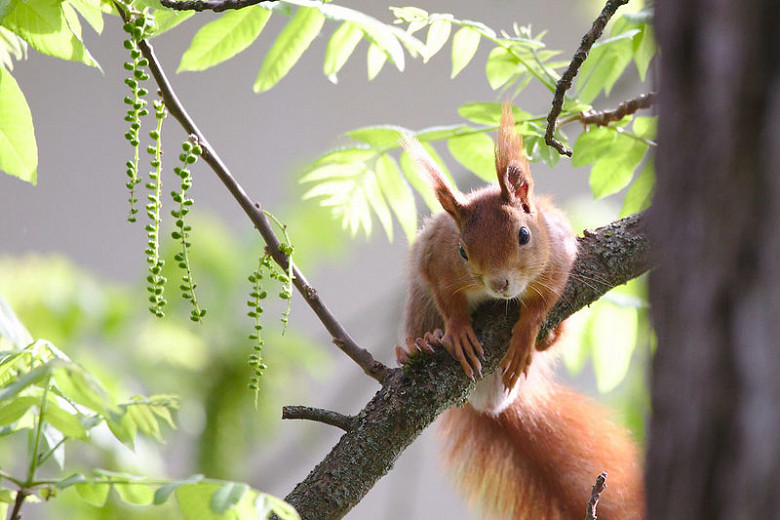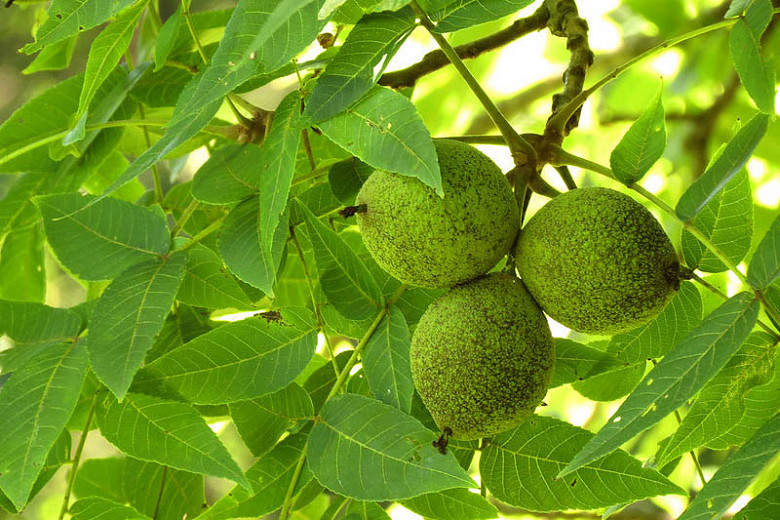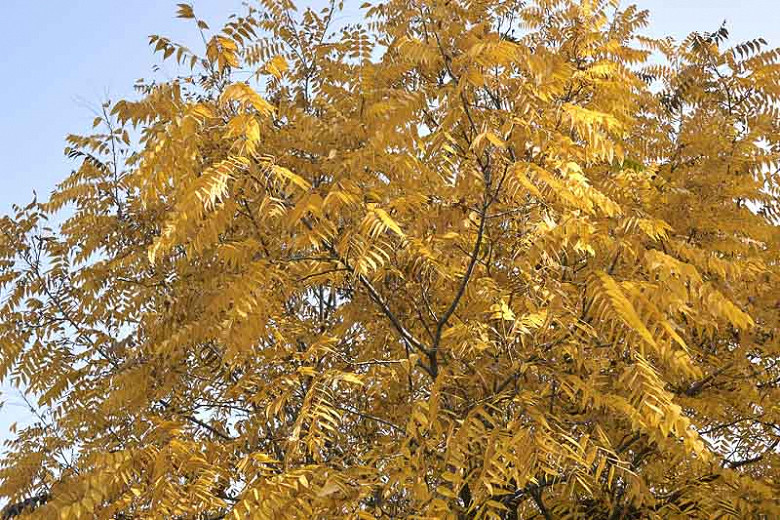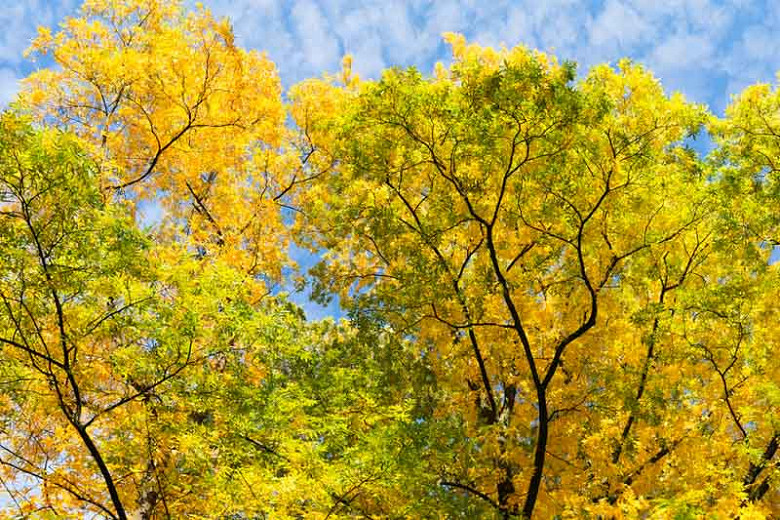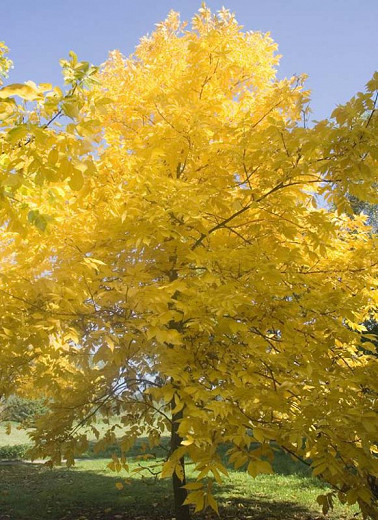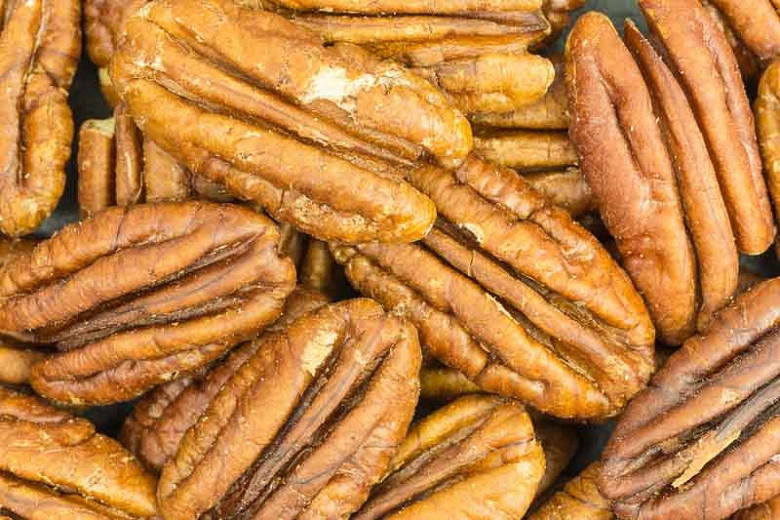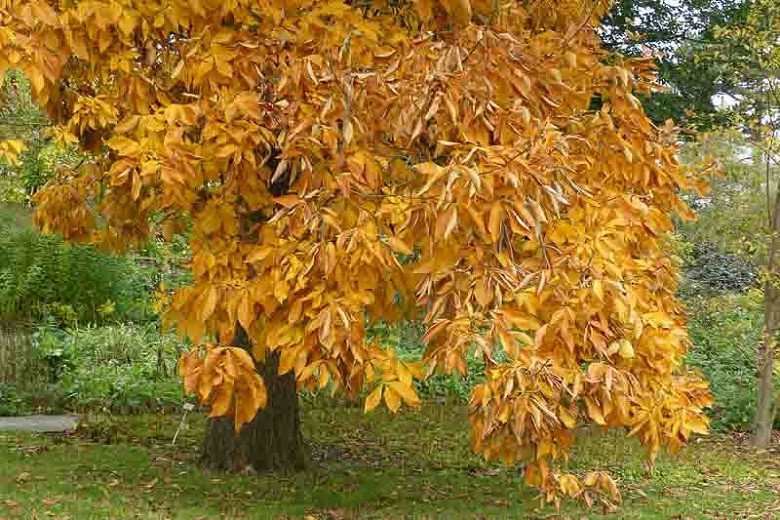Juglans nigra (Black Walnut)
Juglans nigra (Black Walnut) is a tall and massive deciduous tree with a large oval to rounded canopy of wide-spreading branches. The trunk is usually long and devoid of branches on mature trees. The dark gray-black bark is fissured, sharply ridged, forming attractive diamond patterns. Strongly aromatic when crushed, the large odd-pinnate compound leaves, 24 in. long (60 cm), are composed of 15-21 lanceolate leaflets. Emerging late in spring, the dark green foliage turns bright yellow before falling in the fall. Inconspicuous greenish yellow flowers appear in spring, the male flowers in pendulous catkins, 4 in. long (10 cm), and the female flowers in short terminal spikes. The female flowers are followed by sweet, edible nuts, each being encased in a green husk. The nuts mature in fall, dropping to the ground where the husks blacken as they rot away. The delicious nuts must be gathered early, before squirrels and other wildlife can consume them. Black Walnut nuts are used in pies, cakes, cookies, and ice cream. Native to the eastern United States, Black Walnut occurs in rich hardwood forests, in ravines, and along streams and rivers. It is prized for its hardwood which is used especially for furniture, gunstocks, and veneer. A tall ornamental shade tree for large properties. If grown for nut production, it usually takes 20 years before a tree will produce a large crop of nuts.
- Recipient of the prestigious Award of Garden Merit of the Royal Horticultural Society.
- Grows up to 70-100 ft. tall and wide (21-30 m).
- Performs best in full sun in moist, organically rich, well-drained soil.
- No serious pest or disease issues. Keep an eye out for aphids, walnut blister mites, coral spot, leaf spot and anthracnose. Nuts may become a nuisance as they litter and stain.
- Propagate by seed or grafting. Plant nuts in fall or spring. If nuts are sown in spring, they must be stratified. Protect from squirrels.
- This tree is difficult to transplant because of its deep taproot.
- Black Walnut produces a substance known as Juglone that prevents many plants, such as azaleas, rhododendrons, blueberries, peonies and solanaceous crops (tomatoes, peppers, potatoes), from growing under them.
- Toxic to dogs, toxic to horses, non-toxic to cats.
- Native to the eastern United States.
Requirements
| Hardiness | 4 – 9 |
|---|---|
| Heat Zones | 5 – 9 |
| Plant Type | Trees |
| Plant Family | Carya – Hickories |
| Exposure | Full Sun |
| Season of Interest | Spring (Mid,Late)Summer (Early,Mid,Late)Fall |
| Height | 70' – 100' (21m – 30m) |
| Spread | 70' – 100' (21m – 30m) |
| Water Needs | Average |
| Maintenance | Low |
| Soil Type | Chalk, Clay, Loam, Sand |
| Soil pH | Acid, Alkaline, Neutral |
| Soil Drainage | Moist but Well-Drained, Well-Drained |
| Characteristics | Plant of Merit, Showy, Fruit & Berries |
| Native Plants | United States, Midwest, Illinois, Indiana, Iowa, Kansas, Michigan, Minnesota, Missouri, Nebraska, North Dakota, Ohio, South Dakota, Wisconsin, Northeast, Connecticut, Delaware, Maine, Massachusetts, Maryland, New Hampshire, New Jersey, New York, Pennsylvania, Rhode Island, Rocky Mountains, Utah, Wyoming, Southeast, Alabama, Arkansas, Florida, Georgia, Kentucky, Louisiana, Mississippi, North Carolina, South Carolina, Tennessee, Virginia, West Virginia, Southwest, Oklahoma, Texas |
| Tolerance | Drought, Rabbit |
| Attracts | Birds, Butterflies |
| Garden Styles | Prairie and Meadow |

